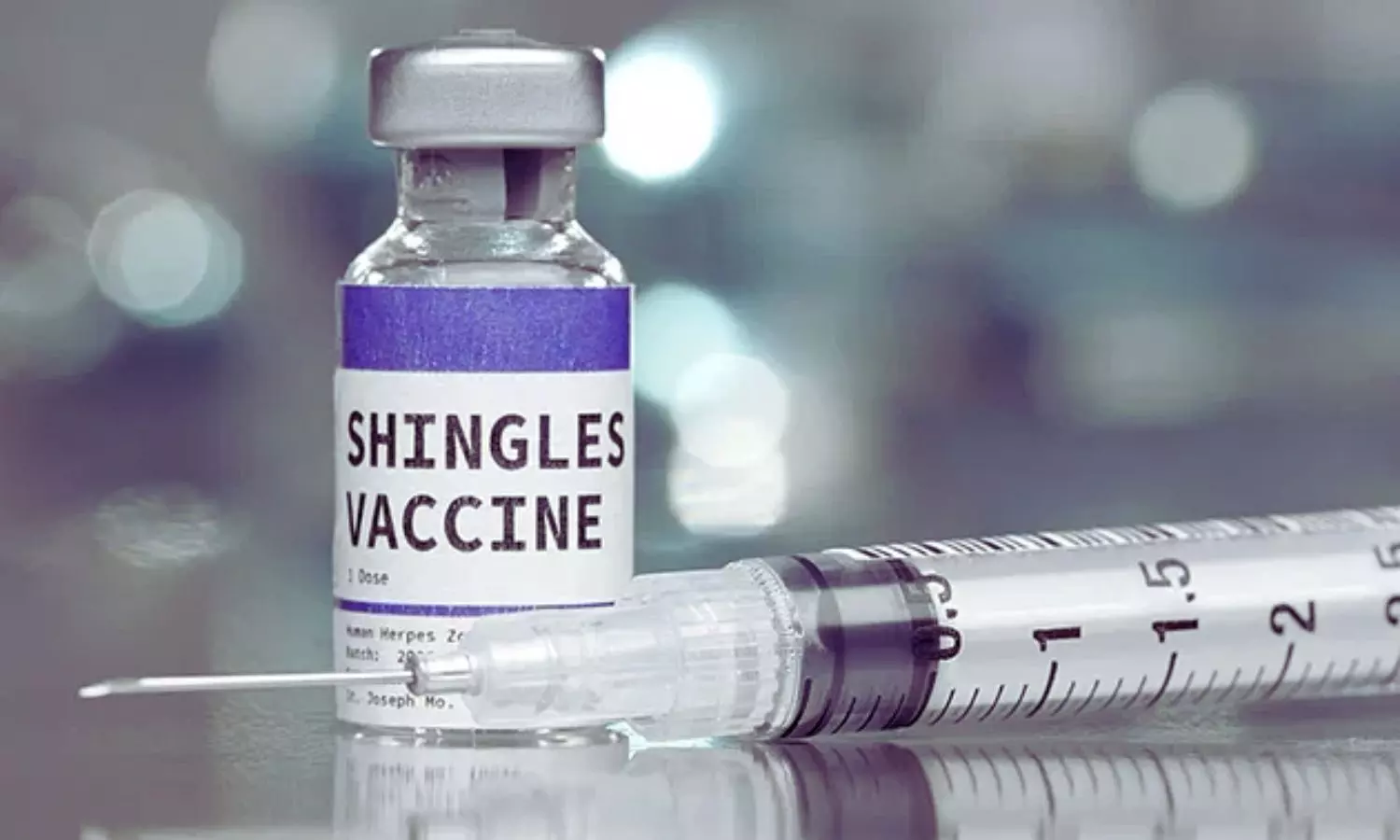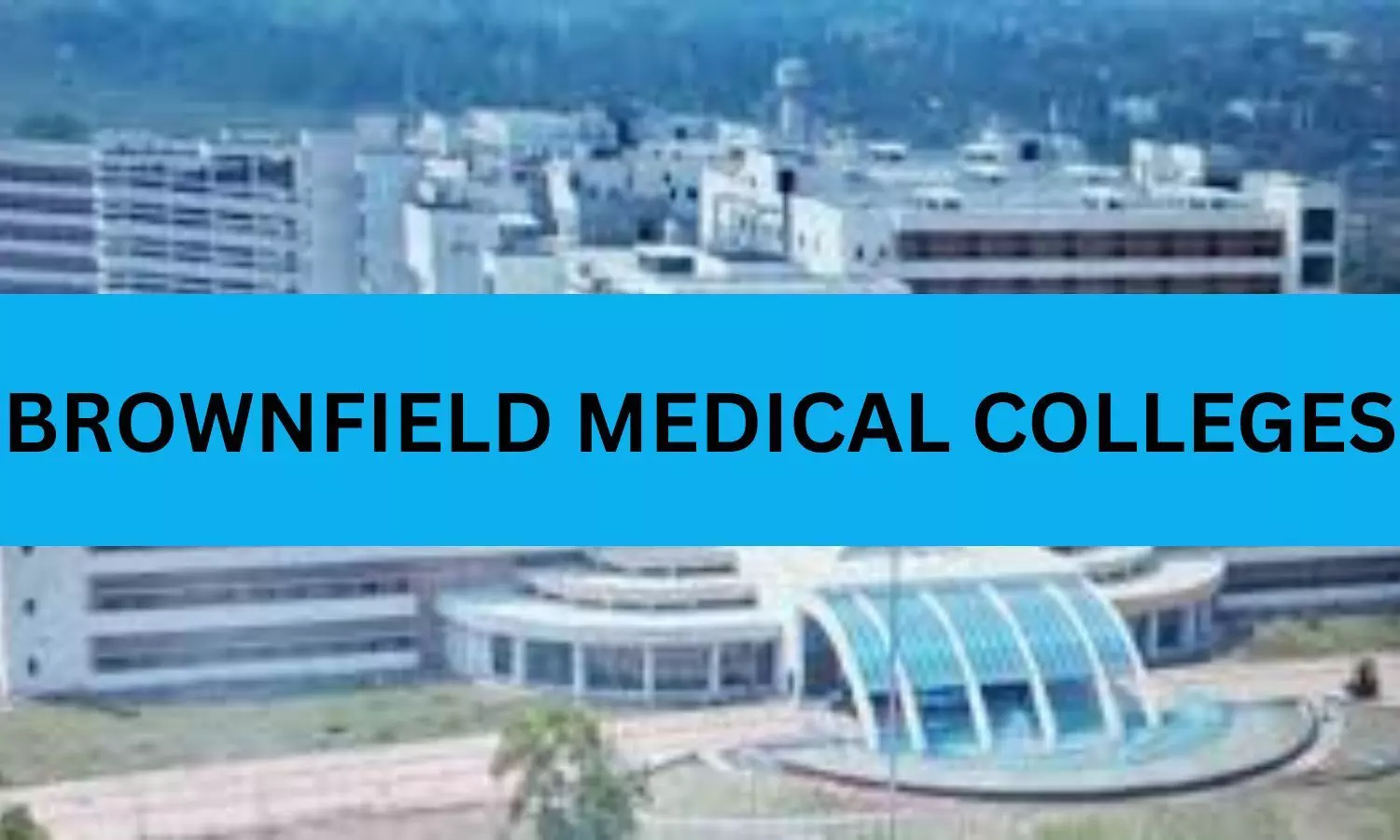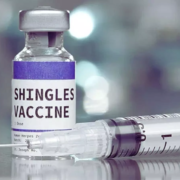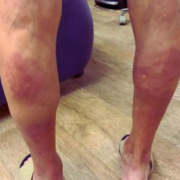‘Gas station heroin’ is technically illegal and widely available. Here are the facts
Powered by WPeMatico
Neighborly help in the brain: Cerebral cortex networks rapidly reorganize to compensate for lost neurons
Powered by WPeMatico
FDA approves pembrolizumab for resectable head and neck cancer with PD-L1 expression
Powered by WPeMatico
US measles count nears 1,200 cases as Ohio officials confirm 3 outbreaks are over
Powered by WPeMatico
Herpes Zoster Vaccine Linked to 50 Percent Drop in Shingles Among Inflammatory Arthritis Patients: Study

USA: In a large real-world study, researchers have found that the Shingrix vaccine significantly reduces the incidence of shingles in individuals with inflammatory arthritis and may play a role in lowering the risk of certain cardiovascular events following a herpes zoster infection. The study, published in Arthritis Research & Therapy by Dr. Jeffrey R. Curtis and colleagues from the University of Alabama at Birmingham in AL, USA, examined outcomes in over 130,000 adults with inflammatory arthritis.
The low vaccine uptake among eligible patients is a matter of concern, say the researchers. Despite clear recommendations from the American College of Rheumatology endorsing shingles vaccination for adults with rheumatic diseases on immunosuppressants, only a fraction of the study population was vaccinated. This gap suggests the need for better awareness and more proactive vaccination strategies in clinical practice.
Drawing from a national healthcare claims database, the study analyzed data from 132,672 patients diagnosed with conditions like rheumatoid arthritis, psoriatic arthritis, and axial spondyloarthritis. These patients were all aged 18 years or older and receiving immunosuppressive therapy. Of the total cohort, only 21.6% had received at least one dose of the Shingrix vaccine, and among them, just 73.2% completed the recommended two-dose series.
The following were the key findings of the study:
- Individuals who received the Shingrix vaccine had a significantly lower risk of developing herpes zoster (shingles).
- The incidence rate of herpes zoster was 7.41 cases per 1,000 person-years among vaccinated individuals.
- In contrast, the incidence rate was 14.76 cases per 1,000 person-years in unvaccinated individuals.
- The vaccine demonstrated an estimated effectiveness of 50% in reducing herpes zoster cases in this high-risk group.
- The findings support the effectiveness of Shingrix even in immunocompromised patients with inflammatory arthritis.
- Among patients who developed shingles, the risk of venous thromboembolic events (VTE) increased during the 60–90 days after infection.
- No significant rise was observed in the incidence of myocardial infarction (heart attack), stroke, or major adverse cardiovascular events (MACE) following shingles infection.
These findings highlight the broader health risks associated with herpes zoster, particularly in immunocompromised populations, and highlight the added benefit of vaccination. According to the authors, preventing shingles through vaccination might indirectly reduce the chance of post-zoster complications like VTE, especially in those already vulnerable due to their underlying inflammatory conditions.
“The study provides compelling evidence that the Shingrix vaccine not only cuts shingles risk in patients with inflammatory arthritis but may also reduce subsequent cardiovascular complications. Increasing vaccine coverage in this population could be a crucial step toward improving long-term health outcomes,” the authors concluded.
Reference:
Curtis, J.R., Conrad, D.M., Krueger, W.S. et al. Real-world data on the use of the Shingrix vaccine among patients with inflammatory arthritis and risk of cardiovascular events following herpes zoster. Arthritis Res Ther 27, 108 (2025). https://doi.org/10.1186/s13075-025-03565-0
Powered by WPeMatico
Dupilumab Shows Promise as Novel Treatment for Necrobiosis Lipoidica: Case Report

USA: A recent case report published in The Open Dermatology Journal has brought attention to the successful use of dupilumab—a biologic commonly prescribed for atopic dermatitis—as a novel therapeutic option for necrobiosis lipoidica (NL), a challenging and chronic skin condition with limited treatment options.
NL typically presents as red-brown plaques, most commonly on the lower legs, and has long posed a therapeutic challenge due to its unclear etiology and resistance to conventional treatments. While it is often associated with diabetes mellitus, NL can occur independently of it, as highlighted in the current report.
The case involved a 71-year-old woman who sought medical attention for painful, red plaques on her legs. A skin biopsy confirmed the diagnosis of NL. Initial management with topical agents, including tacrolimus and betamethasone dipropionate, failed to improve significantly. Given her age and potential side effects, systemic steroids were avoided.
As her condition persisted, clinicians opted to explore dupilumab as an alternative approach. Known for targeting interleukin (IL)-4 and IL-13 pathways, dupilumab has shown benefit in other inflammatory skin disorders. In this instance, a 600 mg subcutaneous dose was administered, followed by 300 mg every two weeks.
Remarkably, within just two weeks of initiating dupilumab therapy, the patient demonstrated notable improvement. The inflammatory plaques began to resolve, evolving into post-inflammatory hyperpigmentation, and the symptoms of burning and irritation significantly subsided. With continued therapy over four months, the patient maintained disease control with no reported adverse effects.
As the skin lesions improved, the patient gradually discontinued the use of topical agents, resorting to them only for minor flare-ups around the ankles. The substantial reduction in inflammation and overall symptom relief highlighted dupilumab’s potential in altering the course of NL, even in cases unresponsive to traditional therapy.
The case not only reinforces the safety profile of dupilumab but also underscores its therapeutic versatility. The authors noted that the rapid clinical response points toward a possible role of IL-4 and IL-13 in the underlying pathogenesis of NL—cytokines directly targeted by dupilumab. Whether one or both pathways are responsible remains to be clarified in future studies.
By presenting this case, Jennifer Sato, University of Hawaii John A. Burn School of Medicine, University of Hawaii Medical Student, Honolulu, United States, and colleagues aim to encourage further exploration of dupilumab in managing necrobiosis lipoidica. Given its positive impact on this patient and its favorable safety record, dupilumab could represent a viable treatment avenue for other patients suffering from recalcitrant NL.
“While broader clinical trials are needed to confirm these findings, our report adds to the growing body of evidence supporting the expanding role of biologics in dermatology beyond their initially approved indications,” the authors concluded.
Reference:
DOI: 10.2174/0118743722350879241209044938
Powered by WPeMatico
JIPMER to Hold 14th Convocation in July 2025

Puducherry- The Jawaharlal Institute of Postgraduate Medical Education and Research (JIPMER) is going to conduct the 14th Convocation (Medical) for PhD, DM/M.Ch., PDF/PDCC, MD/MS/MDS and MBBS Courses soon.
On this, JIPMER has issued a convocation notification, detailing the tentative Convocation date. As per the notification, the convocation is tentatively likely to be held between 10th to 20th July, 2025. However, the exact date and timing of the Convocation will be published shortly on the JIPMER official website.
Meanwhile, candidates should remit Convocation fees of Rs. 1500/- and fill the convocation application online through the Google form link, which is mentioned in the notification, along with the scanned copy of the fee receipts on or before 25 June 2025. However, the last date to fill out the convocation Google form is 25 June 2025 itself.
BELOW ARE THE DETAILS-
1 MBBS – Batch of students who completed internship by 30th September 2024.
2 MD/MS/MDS- Completed degree requirements during December 2023 & July 2024 examination sessions.
3 DMTM.Ch- Completed degree requirement during December 2023 & June 2024 examination sessions.
4 PDF/PDCC- Completed degree requirement during the June 2024 examination session
5 PhD- Completed the degree requirement by January 2025.
Moreover, the details of the Dress Code (Traditional Indian Attire) for the convocation ceremony will also be intimated shortly. Graduation stoles will be provided on the convocation day.
PDF/PDCC, MD/MS/MDS and MBBS Courses of JIPMER for the year 2025 is to be held in
Dr. APJ Abdul Kalam JIPMER Auditorium, JIPMER Campus, Puducherry – 605006.
The tentative Convocation date is likely to be between 10th tb 20th Jrily, 2025.
The exact date and timing of the Convocation will be published shortly in the JIPMER website, the notice said.
To view the notice, click the link below
Powered by WPeMatico
AIIMS to Conduct UG, PG Professional Exams in July 2025, Check out schedule for payment, admit card

New Delhi- The All India Institute of Medical Sciences (AIIMS), New Delhi, is going to conduct the professional examinations of Undergraduate (UG) and Postgraduate (PG) in July 2025. Regarding this, the examination section of AIIMS has issued a notice informing about the schedule of payment of the examination fee and issuance of the admit card.
According to the notice, the online registration and Submission of the Examination Fee window will be open from 19 June 2025 till 28 June 2025. Meanwhile, only those eligible candidates who have paid their Examination Fees will be able to download their Admit Card w.e.f. 19 June 2025 itself.
The notice also said that the candidates who are going to appear in the professional examinations for undergraduate and postgraduate are advised to visit the official website of AIIMS to fill out the examination form and pay the examination fee. However, the examination fee should be paid through Debit/Credit Card/Net Banking only. The fees to be paid will be populated automatically depending upon the course.
STEPS FOR DOWNLOADING THE ADMIT CARD
STEP 1- Visit the official website of AIIMS New Delhi.
STEP 2- Go to the “STUDENT TAB” for the desired course.
STEP 3- Click on the Admit Card link.
STEP 4- Enter Enrolment Number.
STEP 5- Enter Date of Birth.
STEP 6- Download the admit card.
The AIIMS New Delhi is going to conduct the professional examinations for the following UG and PG courses-
1 B.Sc. (Hons) Nursing Phase – IV.
2 First MBBS.
3 M. Biotechnology.
4 MSc. Courses.
5 M.Sc. Nursing Phase – I & II
Meanwhile, Medical Dialogues has earlier reported regarding the schedule of Post Doctoral (DM and MCh) Professional Examinations. The exams are scheduled to be held in May 2025.
To view the notice, click the link below
Powered by WPeMatico
Gujarat to Soon Get 9 New Brownfield Medical Colleges Under PPP Model

Gujarat- Senior officials of the Gujarat health department have recently confirmed that nine brownfield medical colleges will soon become a reality under the public-private partnership (PPP) model.
The nine brownfield medical colleges that are expected to come up in Veraval in Gir Somnath, Botad, Jam Khambhalia in Devbhoomi Dwarka, Nadiad in Kheda, Ahwa in Dang, Lunawada in Mahisagar, Chhota Udepur, Anand and Modasa in Aravalli.
According to a TOI media news report, sources said that the final approval of the state government is awaited to take forward the existing brownfield policy, which was in place till March this year. Apart from this, the health department has identified eligible hospitals and potential partners.
The new brownfield medical colleges in the state were announced by state health minister Rushikesh Patel in October 2024. Brownfield projects involve remodelling and upgrading existing facilities, while greenfield projects involve fresh construction and development. The state policy aims to provide quality treatment to the local population and medical education to the youth of the state.
Besides this, the state health minister earlier listed out several conditions based on which brownfield medical colleges will be allowed. The hospitals will have to provide free treatment to pregnant women for 20 days after delivery and children up to one year, set up a NICU and a 10-bed unit for dialysis service and provide free treatment for all conditions except heart, brain, cancer and organ transplant.
Currently, brownfield medical colleges operate in Dahod, Bharuch, Amreli, Banaskantha and Tapi districts. Apart from this, Gujarat has a total of 23 government medical colleges (including colleges run by Gujarat Medical Education and Research Society (GMERS)), 18 private and one deemed university medical college. These colleges have a total of 7,400 MBBS seats. However, the brownfield medical college policy was first implemented in 2017 and was later revised in 2022.
Meanwhile, Director (Medical Education) Dr R N Dixit said hospitals and partners have been identified for new brownfield medical college projects and the process of collaboration would be expedited once the revised policy comes into effect.
Powered by WPeMatico





